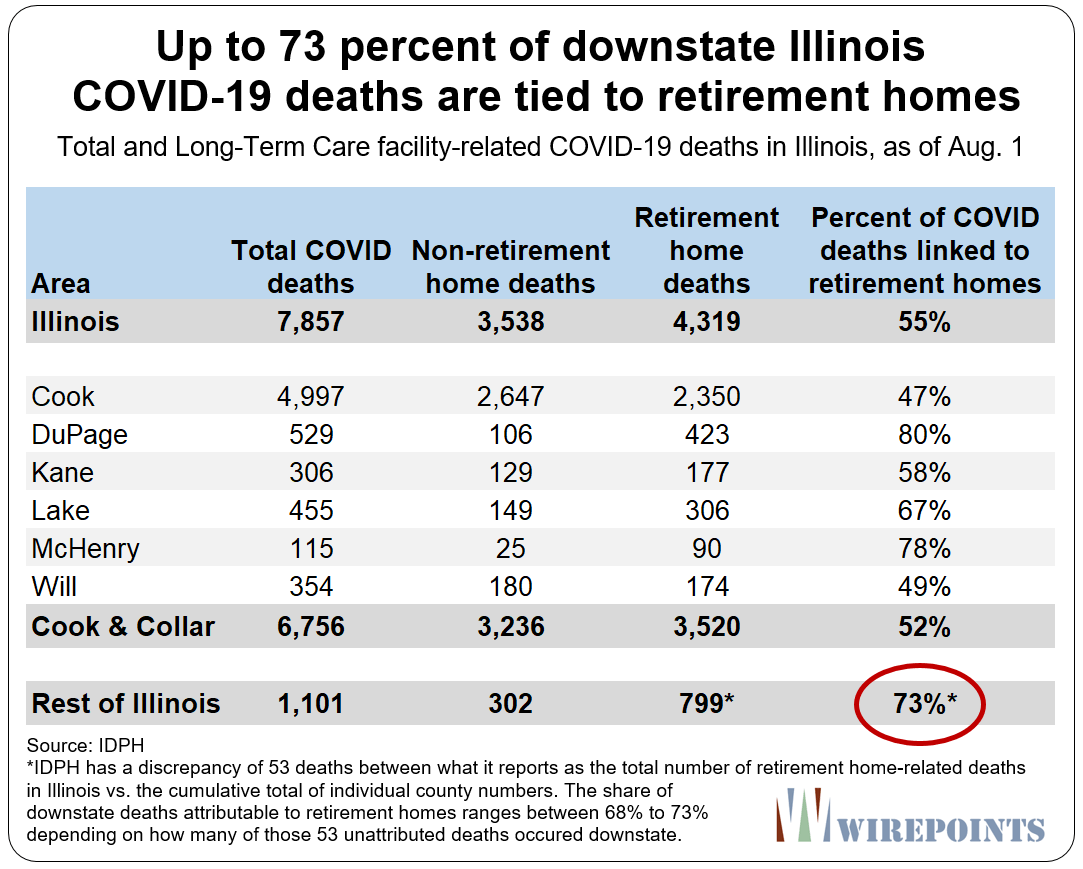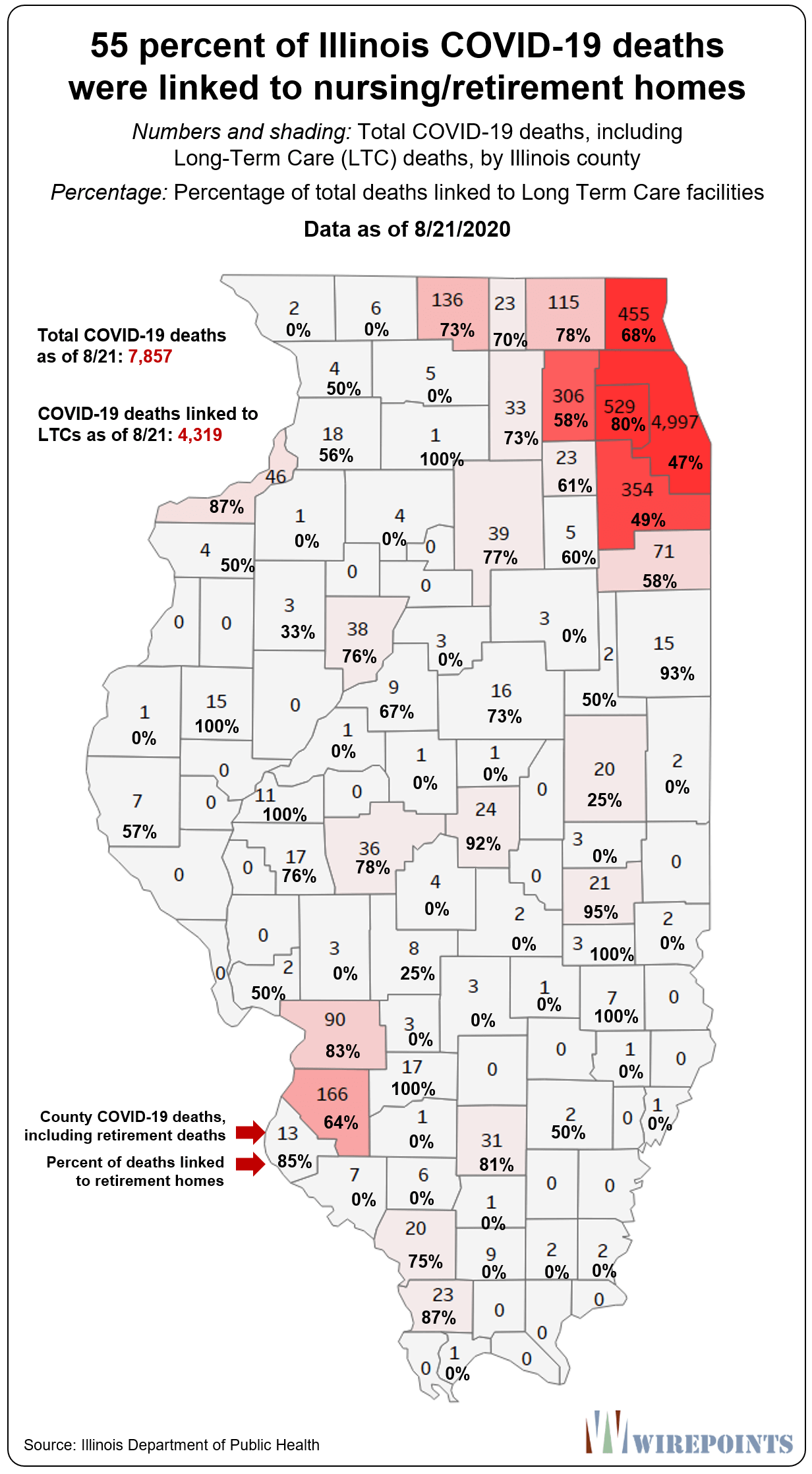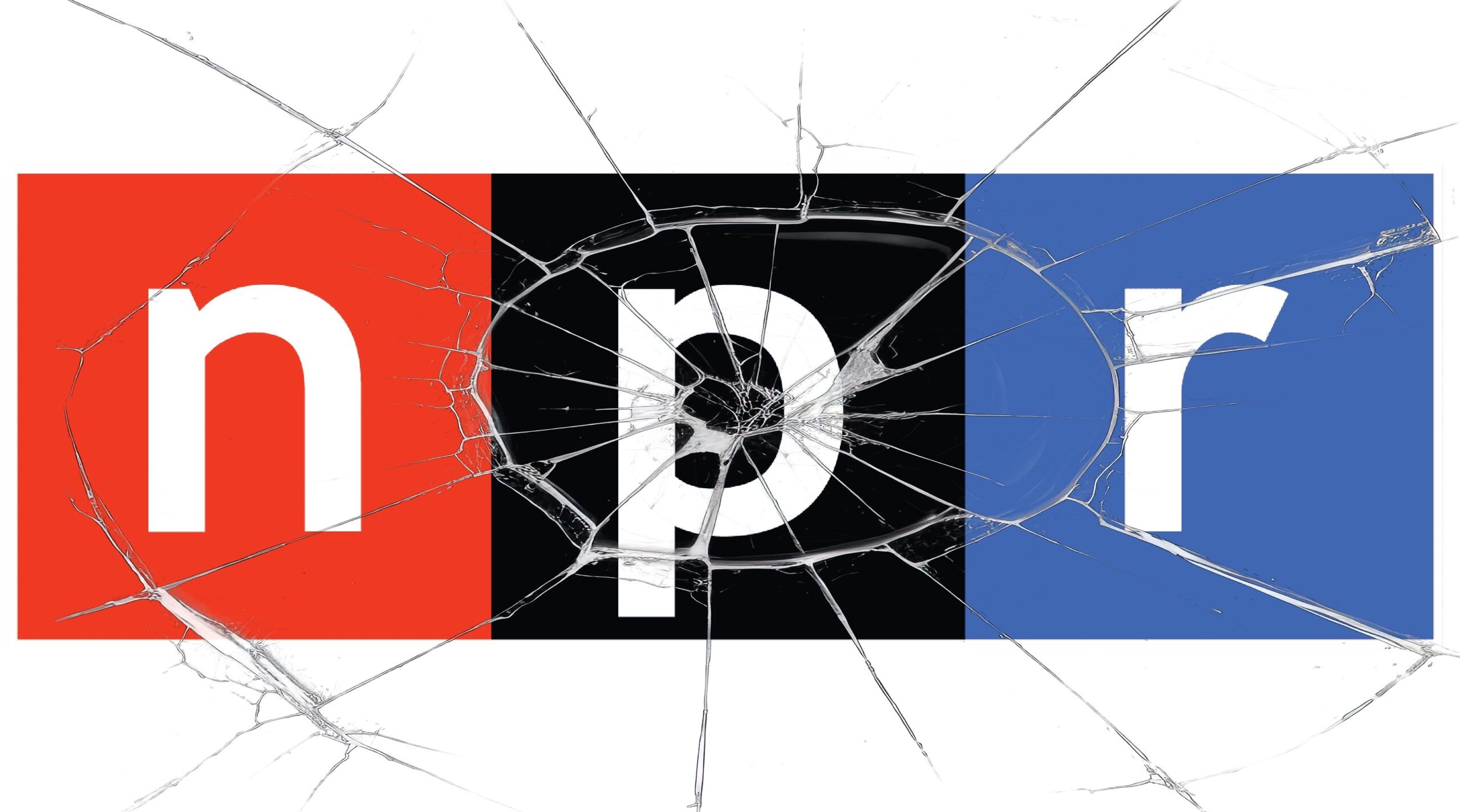By: Ted Dabrowski and John Klingner
You can understand why Illinois downstaters continue to resent the top-down COVID-19 recovery rules imposed by Gov. J.B Pritzker. The coronavirus downstate (Illinois less Cook and the Collar counties) never developed into a general public crisis like it did in Chicago, yet more than 90 counties outside Cook and the Collar counties suffered heavy-handed lockdowns for several months, far longer than the government’s own numbers said they should have. Now Gov. J.B. Pritzker is threatening some of those counties with renewed coronavirus restrictions.
The real problem downstate is, and continues to be, the failure of the state to protect nursing home residents. That’s where the large majority of deaths have come from and where the real focus from the governor needs to be.
A new analysis shows that between 68 to 73 percent of COVID-19 deaths downstate are tied to nursing homes. Virus deaths there totaled 1,101 as of August 21. Of those, between 750 and 800 have been tied to retirement homes.*
Despite late April media reports that drew more scrutiny to Illinois’ spiking retirement home deaths, their share of total deaths have continued to grow. In early May, Wirepoints reported that 59 percent of all downstate deaths were retirement-home related. Since then, virus-related retirement home deaths downstate have continued to outpace general public COVID-19 deaths at a rate of at least 2.5 to 1.
Look at the map below to see just how downstate has been impacted by COVID-19. Half of Illinois counties have suffered just three deaths or less after six months of COVID, with 28 counties still experiencing zero deaths.
And of the counties that have experienced significant outbreaks, in most cases retirement homes residents make up the overwhelming percentage of deaths.
Regardless of what the governor may say, the successful protection of retirement home residents is still a problem. Just last week, The Belleville-News Democrat reported that nursing home cases are on the rise again in southwestern Illinois.
Retirement home deaths in Illinois continue to be a tragedy. Better protection of retirement homes, and not business shut-downs, should be the focus downstate.
*There is a discrepancy of 53 deaths between the total number of retirement home deaths reported by IDPH and a county-by-county roll-up of the data as provided by the agency. If all 53 missing deaths are assigned to Cook and the Collar counties, then the share of retirement home deaths downstate equals 68 percent off all downstate COVID-19 deaths. If all missing deaths are attributed to downstate, then the share of downstate retirement home deaths totals 73 percent of all downstate deaths.
Read more about the impact of COVID-19 on Illinois:
- Questions and problems grow over Illinois’ handling of retirement homes
- Ignore Illinois cases, positivity and focus on hospitalizations, deaths
- The facts support in-person learning for most Illinois schools.
- Illinois Media and the State Should Immediately Update the Message on Hydroxychloroquine
- COVID-19 spreads to half of all Chicagoland retirement homes. How did this happen?




 A set of state lawmakers want to extend CPS’ current school closing moratorium to February 1, 2027 – the same year CPS is set to transition to a fully-elected school board. That means schools like Manley High School, with capacity for more than 1,000 students but enrollment of just 78, can’t be closed for anther three years. The school spends $45,000 per student, but just 2.4% of students read at grade level.
A set of state lawmakers want to extend CPS’ current school closing moratorium to February 1, 2027 – the same year CPS is set to transition to a fully-elected school board. That means schools like Manley High School, with capacity for more than 1,000 students but enrollment of just 78, can’t be closed for anther three years. The school spends $45,000 per student, but just 2.4% of students read at grade level. Hopefully, all media will get the message, in Illinois, too.
Hopefully, all media will get the message, in Illinois, too. Ted joined Tom Miller of WJPF to talk about Illinois’ highest-in-the-nation property taxes, why lawmakers don’t want to touch the tax’s cost drivers, just how much Illinoisans’ tax burden has grown over the decades, why Gov. Pritzker failed to meet his promise to reform property taxes, and more.
Ted joined Tom Miller of WJPF to talk about Illinois’ highest-in-the-nation property taxes, why lawmakers don’t want to touch the tax’s cost drivers, just how much Illinoisans’ tax burden has grown over the decades, why Gov. Pritzker failed to meet his promise to reform property taxes, and more.
The real headline here is the collar counties: 80% percent of COVID deaths in DuPage are in nursing homes? OMG!!!!! DuPage has a population of 922,921. So the 529 deaths add up to only 0.05% (one-twentieths of one percent!!!) of the population, and 80% of them are in nursing homes? Whoa!!!! That’s an ENTIRELY different picture than portrayed on the evening news!
Also, I’d love to see Chicago broken out separately from suburban Cook. I’ll guess the difference would be striking.
In my opinion, most nursing home problems can be correlated to one ratio: CNA per resident. When the CNA has too many residents in her charge ( relative to hours-per-shift and assigned tasks per shift) , the ability to follow standard precautions is eroded. Obviously, CNA-to-resident ratio is a function of the dollar amount society is willing to pay for skilled nursing facilities day rates. However, even high CNA-to-resident ratios (low pt.-per-staff) are subject to psychological erosion of efficiency. CNAs are humans serving the basest physical needs of other humans, and are prone to resent such servitude. CNAs are expected… Read more »
Early on, at beginning of pandemic jb did two things–1.) he suspended newely past (union friendly) minimum staffing legislation ,and 2.) Passed legal lawsuite protections against healthcare providers. Who knows what lobbyist or pals of madigan were behind that? The press never investigates. And on top of that, he hasnt called back the idph afscme heros from working at home indefinitely with zero layoffs and giant pay raises…(same for ides and other state agencies). Zero reporting in press. Reps powerless but demanding investigations
Learned from Cuomo
Pritzker created the economic destruction in Illinois with his unwarranted lockdown. America should not pay Illinois for Pritzker’s malfeasance!
This is criminal. How about,JB, drop your agenda and focus on where the actual hot spots are. Great article guys. I really hope the citizens will hold the Democrats accountable. If only JB would follow the “science”!!!! On a separate note, is anybody asking him about these statistics at the press conferences, or do they just lob softballs. I’ve watched the earlier ones but it’s the same rhetoric at each one now. Thanks!
If I’m not mistaken some of these reporters are screened. Which means they will only ask questions that he would like or answer without issue.